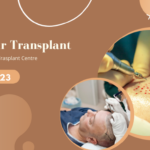Hair loss is a common concern affecting millions worldwide, often leading to a significant impact on self-esteem and confidence. With advancements in medical science, hair transplantation has emerged as a transformative solution for hair restoration. At Arora Skin Clinic, we specialize in the latest hair transplant techniques that are revolutionizing the field. Let’s explore the science behind these modern methods and how they are changing the landscape of hair restoration.
Understanding Hair Transplantation
Hair transplantation is a surgical procedure that involves transferring hair follicles from a donor area, typically the back or sides of the scalp, to the balding or thinning areas. The goal is to achieve natural-looking, permanent hair growth in areas affected by hair loss. The success of this procedure hinges on understanding the intricate details of hair growth and the science behind hair transplantation.
The Science of Hair Follicles
Hair follicles are tiny structures located in the skin, responsible for hair growth. Each follicle goes through a cycle consisting of three phases: anagen (growth phase), catagen (transitional phase), and telogen (resting phase). Understanding this cycle is crucial for effective hair transplantation. Modern techniques focus on preserving the integrity of hair follicles during extraction and implantation, ensuring their survival and optimal growth in the recipient area.
Modern Hair Transplant Techniques
- Follicular Unit Transplantation (FUT): Also known as the strip method, FUT involves removing a strip of skin with hair follicles from the donor area. The strip is then divided into individual follicular units and transplanted into the recipient area. This technique allows for the transplantation of a large number of grafts in a single session, making it ideal for patients with extensive hair loss.
- Follicular Unit Extraction (FUE): FUE is a minimally invasive technique that involves extracting individual hair follicles directly from the donor area using a specialized punch tool. These follicles are then implanted into the thinning or balding areas. FUE offers several advantages, including reduced scarring, quicker recovery time, and the ability to harvest follicles from various parts of the body, not just the scalp.
- Direct Hair Implantation (DHI): DHI is an advanced form of FUE where extracted follicles are implanted using a pen-like device called a Choi implanter. This method allows for precise control over the depth, angle, and direction of each follicle, resulting in a more natural and dense hair appearance.
- Bio-FUE: Bio-FUE combines traditional FUE with Platelet-Rich Plasma (PRP) therapy. PRP is rich in growth factors that stimulate hair growth and improve the healing process. This technique enhances the survival rate of transplanted follicles and promotes healthier, thicker hair growth.
The Role of Technology
Technological advancements have played a pivotal role in revolutionizing hair transplantation. High-resolution imaging and robotic-assisted procedures allow for greater precision in follicle extraction and implantation. Automated systems enhance the efficiency of the process, ensuring consistent and natural-looking results. Additionally, innovations in anesthesia and post-operative care have significantly improved patient comfort and recovery.
Hair transplantation has come a long way, with modern techniques offering more effective, natural-looking, and minimally invasive solutions for hair loss. At Arora Skin Clinic, we are dedicated to providing cutting-edge hair restoration services that can help you regain your confidence and achieve the look you desire. If you’re considering hair transplantation, trust the experts who understand the science behind the art of hair restoration.
For more information or to schedule a consultation, contact Arora Skin Clinic today. Let us help you embark on your journey to a fuller, healthier head of hair.





